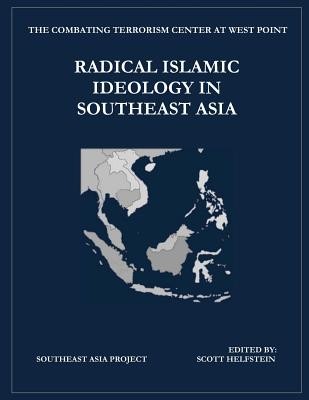
- Išsiųsime per 10–14 d.d.
- Autorius: The Combating Terrorism Center at West P
- Leidėjas: CreateSpace Independent Publishing Platform
- Metai: 2015
- Puslapiai: 118
- ISBN-10: 1508940118
- ISBN-13: 9781508940111
- Formatas: 21.6 x 28 x 0.6 cm, minkšti viršeliai
- Kalba: Anglų
- Extra -15 % nuolaida šiai knygai su kodu: ENG15
Atsiliepimai
Aprašymas
With both secular and Islamic governments, Southeast Asia is often portrayed as a representative model of progressive Islam, while also suffering longstanding Muslim separatist conflicts. The region has been the target of numerous terrorist attacks over the past decade, but the character and motivation for these attacks varies widely. Many of these attacks are rooted in national or regional ethnic struggles, but others reflect the grander Salafi-Jihadi ambition of building a regional or global caliphate. A significant component of future discord and collaboration in the region is tied the nature of the populations' grievances and the trajectory of radical Islam. This report addresses the diffusion of jihadist thought in Southeast Asia, in the hope that understanding past and present jihadist trends in the region help minimize threats in the future. This report shows that the differences among nations, groups, and grievances in Southeast Asia generate a complex patchwork that does not fit into a neat paradigm. There are important characteristics that distinguish the threats faced by each country in the region, as well as important interconnections that tie them together. Some countries in the region (such as the Philippines and Thailand) face local ethno-nationalist Islamic insurgencies rooted in colonial policies. The minority groups involved in these struggles fight for separation or autonomy from the existing political regimes that they perceive to be guilty of imposing discriminatory policies. Jihadi ideology is largely irrelevant to these conflicts, playing a minimal role in recruiting and morale building if it is present at all. The affective impact of these local, ethno-nationalist conflicts, however, has regional consequences. Radical Islamist elements in other Southeast Asian nations (such as Malaysia and Indonesia) use these insurgencies to rally support for the Islamist agenda and radicalize those sympathetic to the plight of Muslim minorities elsewhere. In some cases, fundamentalists unleash their aggression against the foreign governments in the region opposing insurgent forces (i.e. Indonesian fighters in the Philippines). More often, however, these radicalized groups target their own government or global interests within their country in an attempt to further their cause of extremist interpretations of Islam and sharia jurisprudence. Jihadist literature is more prominent in these environments than those with longstanding ethno-nationalist grievances. Given the roots and motivations of different groups, this discrepancy is not surprising, but the fluid nature of the Southeast Asian political landscape complicates any attempt to simplify or categorize grievances. Extensive ties among certain radical groups suggest that there is a great deal of ideological cross-fertilization, though they manifest in unique ways due to the significant differences among the extremist elements in different countries. The remainder of this introduction highlights several convergent and divergent forces among the countries and groups within the region to set the stage for the detailed case studies that follow. The volume is largely organized along geographic lines, with chapters examining the influence of jihadist thinking in Indonesia, Malaysia, The Philippines, and Thailand. Each chapter outlines the ideological roots of key insurgent and terrorist groups, as well as the jihadi influence on these groups given personal relationships and jihadist literature translated into local languages. The final chapter looks at an increasingly important distribution platform for jihadist ideas now and for the future, the Internet, examining some of the major websites in various languages in an attempt to shed some light on ideological characteristics of jihadis in Southeast Asia.EXTRA 15 % nuolaida
Kupono kodas: ENG15
Akcija baigiasi už 6d.18:59:54
Nuolaidos kodas galioja perkant nuo 10 €. Nuolaidos nesumuojamos.

- Autorius: The Combating Terrorism Center at West P
- Leidėjas: CreateSpace Independent Publishing Platform
- Metai: 2015
- Puslapiai: 118
- ISBN-10: 1508940118
- ISBN-13: 9781508940111
- Formatas: 21.6 x 28 x 0.6 cm, minkšti viršeliai
- Kalba: Anglų




Atsiliepimai